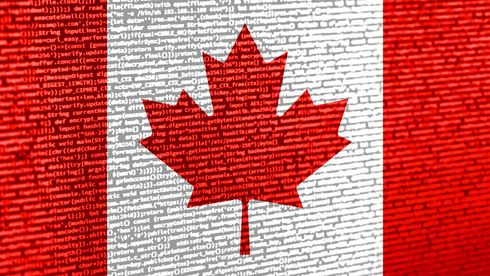On September 26, 2025 The Appeals Review Panel ("ARP") of the Patent Trial and Appeal Board ("Board") issued a decision in Ex parte Desjardins et al., related to U.S. Patent Application No. 16/319,040, assigned to DeepMind Technologies Limited. The application concerns methods for training machine learning models, specifically addressing continual learning and the problem of "catastrophic forgetting" when models are trained on multiple tasks sequentially.
The Board had previously introduced a new ground of rejection under 35 U.S.C. § 101 (in addition to a rejection under Section 103 based on prior art references), finding the claims directed to an abstract idea (mathematical calculation) and thus patent-ineligible. On rehearing, the ARP vacated this new ground of rejection, finding that the claims, when considered as a whole, are not directed to an abstract idea but instead integrate the abstract idea into a practical application. The ARP did not disturb any of the Board's other determinations.
Review
In its review, the ARP agreed with the Board that the claims recite mathematical calculations (e.g., computing an approximation of a posterior distribution), which are considered abstract ideas under § 101. As such, it was justified in moving to the next steps of the Alice analysis for patent eligibility.
Next, the ARP disagreed with the Board and found that the claims do more than recite an abstract idea. The claims, as recited, provide a technical improvement in the functioning of machine learning models by enabling continual learning, reducing storage requirements, and preserving performance across tasks. In particular, the decision emphasized that the claimed invention addresses a technical problem ("catastrophic forgetting") and improves the operation of AI systems, not just through generic computer implementation but by a specific training strategy. To support this determination, the ARP looked to the specification which, on its own, recited how the invention would improve functioning of an AI model--in particular, the specification explained how the proposed invention would use less “storage capacity” and lead to “reduced system complexity." These improvements, which the ARP found were incorporated into the claims as a whole, constituted an “improvement to how the machine learning model itself operates” rather than just a “mathematical calculation.”
The ARP cited Federal Circuit cases (for example, Enfish LLC v. Microsoft Corp., 822 F.3d 1327 (Fed. Cir. 2016) and McRO, Inc. v. Bandai Namco Games Am. Inc., 837 F.3d 1299 (Fed. Cir. 2016)) supporting the patent eligibility of software-based technological improvements--though the decision did not address or incorporate the Federal Circuit's recent Recentive decision (Recentive Analytics, Inc. v. Fox Corp. 134 F.4th 1205 (Fed. Cir. 2025)) which dealt with Section 101 eligibility for AI inventions. The ARP also went through application of the Manual of Patent Examining Procedure and in particular Section 2106.04 which explains that claims that are directed to an “improvement to other technology" are patent eligible.
The decision criticized the overbroad application of § 101 to exclude AI innovations and stressed that §§ 102, 103, and 112 are the proper tools for limiting patent scope.
Implications for AI Patenting and § 101 Eligibility
Like the Recentive decision, the ARP's decision here will have lasting impacts on those who seek to obtain patent protection on their AI-related inventions.
- AI Innovations Can Be Patent-Eligible: The decision affirms that AI and machine learning inventions are not categorically excluded from patent protection under § 101. If the claims are directed to a specific technical improvement, they may be patent-eligible.
- Practical Application is Key: Merely reciting an abstract idea is not enough for ineligibility; the claims must be evaluated as a whole to determine if they are integrated into a practical application that improves technology or computer functionality. This is the primary area of critique the ARP made against the Board's decision, which the ARP found did not appropriately consider and apply the Enfish decision.
- Caution Against Overbroad § 101 Rejections: The ARP warns against equating all machine learning or algorithmic inventions with unpatentable abstract ideas, especially when the claims provide concrete technical benefits. At the same time, though recitation of such improvements in the specification is important (and might implicate other patent principles, such as § 112), these improvements must be encompassed by the claims as a whole in order to overcome recitation of an abstract idea. This emphasizes the importance of proper preparation of a specification, to ensure that any possible benefits are included, since those benefits might be the key to patentability.
- Focus on Traditional Statutory Requirements: The decision encourages examiners and panels to focus on §§ 102 (novelty), 103 (non-obviousness), and 112 (written description, enablement) for limiting patent scope, rather than relying excessively on § 101. Here, though the ARP overturned the Board's decision with respect to § 101, it did not disturb the Board's other validity determination with respect to § 103.
Conclusion
This decision is a significant affirmation for the patent eligibility of AI and machine learning inventions in the U.S. It clarifies that claims providing specific technical improvements—such as solutions to continual learning in AI—can satisfy § 101, provided they are integrated into a practical application. The ruling also signals a shift toward a more balanced and nuanced approach to AI patenting, reducing the risk of overbroad exclusions under § 101.


/Passle/678abaae4818a4de3a652a62/SearchServiceImages/2025-11-12-19-39-00-222-6914e254d13d736fb03da927.jpg)
/Passle/678abaae4818a4de3a652a62/SearchServiceImages/2025-11-20-17-23-27-574-691f4e8fa5303aa7b7bcc60d.jpg)

